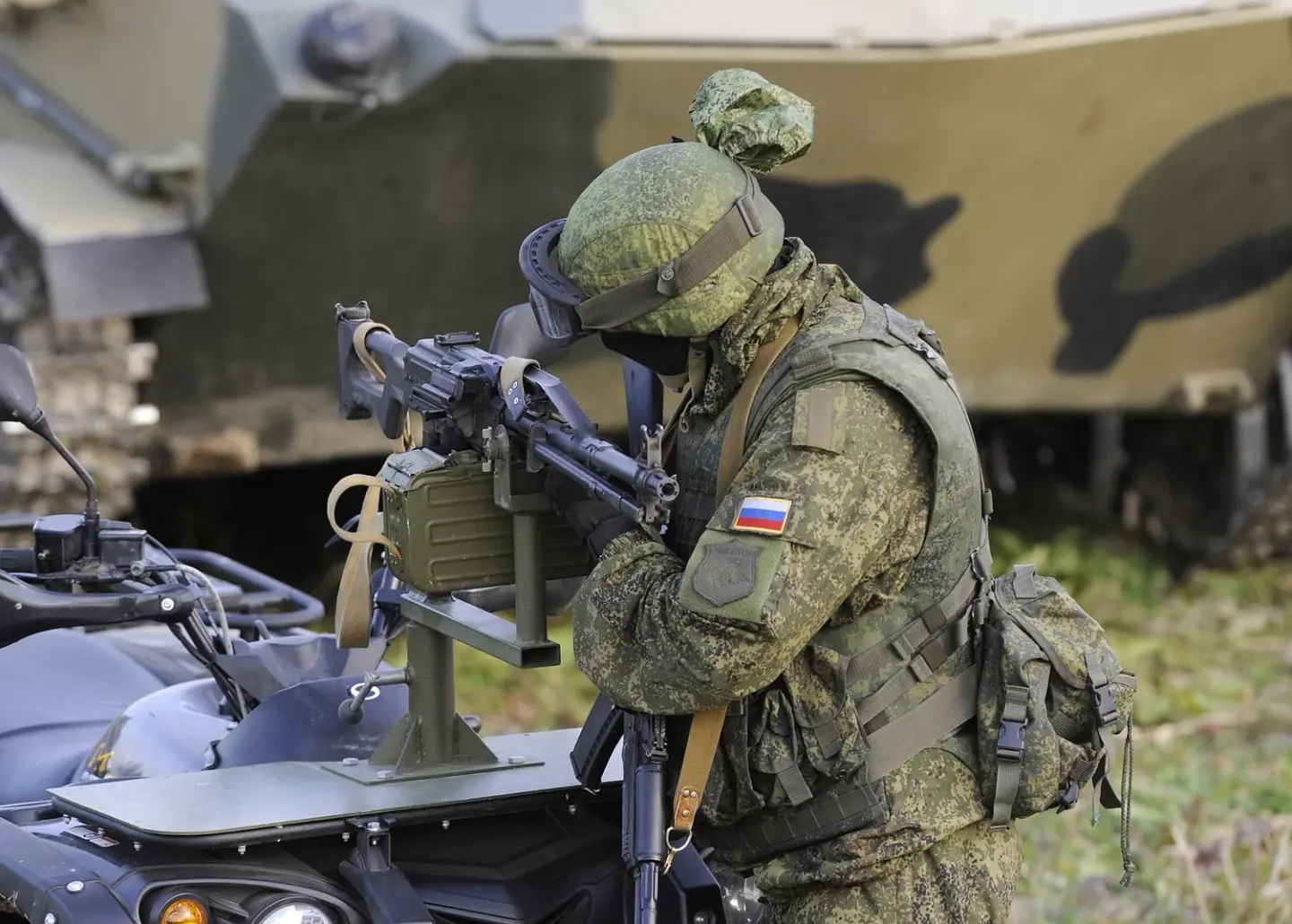Russia is changing tactics at the front – fewer assaults, more “invisible”: what is known
2 September 18:47
Ukrainian troops have liberated the village of Novoekonomichne in Donetsk region. Soldiers of the assault units of the Skelya regiment raised the national flag in the liberated settlement, the General Staff of the Armed Forces of Ukraine reported.
According to DeepState, the enemy’s offensive slowed down in August, with the pace of occupation decreasing by 18%.
During the month, the enemy carried out approximately 5027 attacks, which is less than in May, June and July.
However, in the Toretsk sector, the enemy has changed its approach – now infantrymen wearing special camouflage equipment are on the offensive, which makes them difficult to detect.
Such assault groups consist of heavily armed and ammunition-supplied soldiers.
Significant decrease in enemy activity
In August, the number of combat clashes at the frontline decreased significantly, according to data from the DeepState analytical platform and sources of military expert Serhiy Grabsky.
“This means that the Russians are changing their tactics of warfare. The total number of combat clashes has decreased, and this is confirmed not only by DeepState but also by my sources,” Grabsky emphasized.
Russian troops have radically changed their approach to attacks. If in the spring, large groups of 30-60 soldiers were involved in the assaults, now they are small mobile units.
“Today, 2-4 soldiers are involved in such assaults. This indicates the rejection of frontal attacks and attempts to use the looseness of our combat formations,” the expert explains.
The enemy uses “invisibility cloaks”
For covert infiltration, Russian infantrymen use special camouflage equipment, including so-called “invisibility cloaks” that reduce visibility in the thermal and infrared spectrum.
“This is camouflage equipment that blurs a person’s heat signature. It is especially effective at night, when other means of detection are practically powerless,” explains Hrabsky.
If he is not visible, a soldier can easily slip between positions.
According to the expert, the enemy is moving to a “viscous war”, trying to find weaknesses in the Ukrainian defense, gain a foothold, and then develop an offensive from the flanks.
“These are no longer massive offensives, but infiltration tactics. The enemy is trying to avoid direct confrontation, acting covertly and selectively, trying to put pressure on points,” the military analyst said.
Such attacks are carried out by soldiers who are equipped to work independently without support from the rear. Despite the change in tactics, the enemy has not been able to achieve strategic success. Ukrainian defense remains resilient.
“Over the past month, we have not seen any significant advances by the enemy. Even what happened in the area of Dobropillya fits the described tactical model,” summarizes Grabsky.
Russia is preparing to mobilize another 150 thousand, but avoids full-scale conscription
According to military expert Serhiy Grabsky, Moscow is planning to increase the number of its troops, but is carefully avoiding direct mobilization in order not to cause a social explosion within the country.
“A simple calculation and available data show that the Russians plan to deploy an additional 150,000 troops. But we need to clearly separate the wet dreams of Dugin and similar figures from reality. Taking a million or two and a half million workers out of the economy is an irreparable blow to Russia,” Grabsky said.
The expert recalls that the previous mobilization in 2022 led to a serious outflow of labor resources from Russia, which hurt the economy.
“When they mobilized 320 thousand people, it immediately caused an outflow of more than a million workers. The economy was shaken. Then it stabilized a bit, but it was such a shock. Now imagine what will happen if they mobilize a million. This means the loss of up to three million workers. Can Putin afford such a luxury? I’m sorry, I don’t believe so,” Grabsky said.
The Kremlin is trying to avoid direct mobilization precisely because of the risks to internal stability. Large cities such as Moscow and St. Petersburg are particularly sensitive.
“It’s one thing to engage volunteers or contractors. This does not cause significant social tension. But it is quite another thing to “catch” people on the streets of big cities and send them to the front. This is a risk,” the expert emphasized.
Russia does not want peace, but is preparing for a protracted war
There are no real signs of Moscow’s readiness for peace talks, Grabsky said. On the contrary, everything points to the intention to continue hostilities.
“All the talks – wherever they come from, whether from across the ocean or from the east – make no sense. Russia is now focused on war. This is its way of life. We need to realize this and build both domestic and foreign policy accordingly.”
Russia is trying to save face in front of the world and at the same time keep its economy from collapsing. For the Putin regime, war has become not only a foreign policy, but also an internal tool for maintaining power. And, as Serhiy Grabsky emphasizes, Ukraine must respond to this with all seriousness.









